-
 Bitcoin
Bitcoin $79,557.5233
-4.15% -
 Ethereum
Ethereum $1,621.4541
-9.44% -
 Tether USDt
Tether USDt $0.9994
-0.02% -
 XRP
XRP $1.9973
-6.12% -
 BNB
BNB $555.1591
-6.26% -
 USDC
USDC $0.9999
0.00% -
 Solana
Solana $107.9107
-9.44% -
 Dogecoin
Dogecoin $0.1520
-9.57% -
 TRON
TRON $0.2335
-1.80% -
 Cardano
Cardano $0.5889
-9.29% -
 UNUS SED LEO
UNUS SED LEO $8.8794
-1.87% -
 Toncoin
Toncoin $3.0652
-5.67% -
 Chainlink
Chainlink $11.5147
-9.14% -
 Stellar
Stellar $0.2400
-4.01% -
 Avalanche
Avalanche $16.3792
-8.68% -
 Shiba Inu
Shiba Inu $0.0...01137
-7.20% -
 Sui
Sui $1.9576
-11.41% -
 Hedera
Hedera $0.1433
-11.17% -
 Polkadot
Polkadot $3.7257
-5.27% -
 MANTRA
MANTRA $5.9545
-5.07% -
 Litecoin
Litecoin $72.7435
-11.51% -
 Bitcoin Cash
Bitcoin Cash $274.8473
-8.05% -
 Dai
Dai $0.9999
-0.02% -
 Ethena USDe
Ethena USDe $0.9986
-0.05% -
 Bitget Token
Bitget Token $4.1799
-5.82% -
 Pi
Pi $0.5983
1.73% -
 Monero
Monero $201.0669
-5.69% -
 Hyperliquid
Hyperliquid $10.4496
-11.56% -
 Uniswap
Uniswap $5.1916
-10.64% -
 OKB
OKB $50.4885
-2.17%
What is the difference between a public chain and a private chain on blockchain?
Public blockchains prioritize transparency and decentralization, while private blockchains offer greater control and confidentiality; the optimal choice depends on project needs.
Mar 11, 2025 at 09:45 am
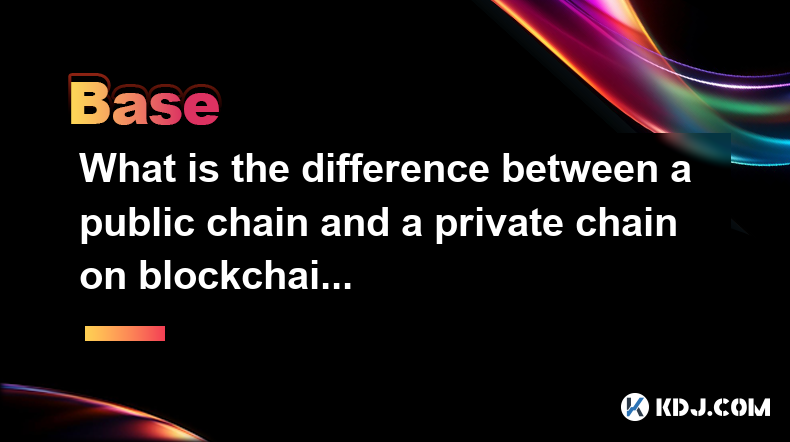
Key Points:
- Public chains offer open access, transparency, and decentralization, prioritizing security and immutability through distributed consensus mechanisms. However, they can be slower and less scalable.
- Private chains provide greater control and confidentiality, ideal for specific organizations needing permissioned access and tailored functionality. However, they lack the inherent security and transparency of public chains.
- The choice between a public and private chain depends on the specific needs and priorities of the project, balancing factors like security, scalability, privacy, and control.
- Hybrid chains attempt to combine the best of both worlds, offering controlled access while maintaining certain aspects of decentralization and transparency.
What is the difference between a public chain and a private chain on blockchain?
The fundamental difference between public and private blockchains lies in their access control and level of decentralization. Public chains are open-source and permissionless, meaning anyone can participate in their network, read the blockchain, and validate transactions. This openness fosters transparency and decentralization, making them resistant to censorship and single points of failure. Bitcoin and Ethereum are prime examples.
Private blockchains, conversely, are permissioned systems. Access is restricted to authorized participants, often members of a specific organization or consortium. This controlled environment allows for greater privacy and customization, as the network's rules and participants are pre-defined. The trade-off is a sacrifice of the decentralization and transparency that characterize public chains. A company might use a private blockchain to track internal supply chains, for example.
The consensus mechanisms employed also differ significantly. Public chains typically rely on proof-of-work (PoW) or proof-of-stake (PoS) to validate transactions and secure the network. These mechanisms ensure the integrity of the blockchain through distributed consensus, making manipulation extremely difficult. Private chains, on the other hand, may use simpler consensus mechanisms, like a designated authority or a federated consensus model, depending on the specific needs of the network. These mechanisms are faster but less secure and resistant to attacks.
Scalability is another key area of divergence. Public chains, due to their open and decentralized nature, often face scalability challenges as the number of transactions increases. Private chains, having a limited number of participants and potentially a simpler consensus mechanism, generally offer better scalability. This allows for faster transaction processing and higher throughput.
In terms of data transparency, public chains prioritize open access to all transaction data. This enhances auditability and builds trust. Private chains, however, restrict access to data, preserving confidentiality. This trade-off between transparency and privacy is a crucial consideration when choosing between the two. The choice depends entirely on the intended application.
Security is paramount in both public and private blockchains. Public chains, with their distributed consensus and large number of participants, boast high levels of inherent security, making them extremely resistant to attacks. Private chains, however, rely on the security of the permissioning system and the chosen consensus mechanism. A compromised private key or a vulnerability in the system's design could jeopardize the entire network.
Hybrid blockchains attempt to bridge the gap between public and private chains, combining aspects of both. They may have a public component for transparency and a private component for specific applications requiring confidentiality. This approach allows for flexibility and customization, catering to various needs. This offers a middle ground for organizations wanting to leverage the benefits of both models.
The selection between a public and a private blockchain depends heavily on the specific requirements of the application. Factors to consider include the desired level of transparency, the need for privacy, the required level of security, scalability needs, and the degree of decentralization desired. There is no single "best" option; the optimal choice depends on the context.
Frequently Asked Questions:
Q: Can a private blockchain be hacked?
A: Yes, a private blockchain can be hacked, although the attack surface is generally smaller than a public blockchain. Vulnerabilities in the system's code, compromised private keys of participants, or flaws in the consensus mechanism can all be exploited.
Q: Is a public blockchain always more secure than a private blockchain?
A: While public blockchains generally have higher inherent security due to their decentralization and distributed consensus, a well-designed and well-maintained private blockchain can also be very secure. The security of a private blockchain depends on the strength of its security measures and the careful management of its access controls.
Q: What are some examples of public and private blockchain applications?
A: Public blockchains are used for cryptocurrencies (Bitcoin, Ethereum), decentralized applications (dApps), and supply chain management systems. Private blockchains are used for internal company systems, financial transactions within a consortium, and managing sensitive data within a restricted group.
Q: Can I convert a private blockchain into a public blockchain?
A: Converting a private blockchain to a public one is generally not straightforward and often requires a significant redesign of the system. The fundamental architecture and consensus mechanisms are very different, requiring substantial changes.
Q: What is a consortium blockchain?
A: A consortium blockchain is a type of permissioned blockchain network where multiple organizations share control and governance of the blockchain. It offers a compromise between the public and private models, allowing for collaboration while maintaining a degree of privacy and control.
Disclaimer:info@kdj.com
The information provided is not trading advice. kdj.com does not assume any responsibility for any investments made based on the information provided in this article. Cryptocurrencies are highly volatile and it is highly recommended that you invest with caution after thorough research!
If you believe that the content used on this website infringes your copyright, please contact us immediately (info@kdj.com) and we will delete it promptly.
- Pepe (PEPE) Weekly Performance Hints At Huge Surge
- 2025-04-07 04:15:13
- XRP Price Tanks 12.8% This Week — More Pain to Come?
- 2025-04-07 04:15:13
- XRP's Funding Rate Has Dropped to Negative 0.012%, a Level Last Seen When the Asset Traded Near $0.33
- 2025-04-07 04:10:13
- A major supply event is coming for the SUI token
- 2025-04-07 04:10:13
- Memecoin DEX PumpSwap Makes a Significant Impact, Attracting 700K Wallets and Facilitating 30M Swaps
- 2025-04-07 04:05:12
- Ronin Network (RON) Has Retraced Heavily This Year
- 2025-04-07 04:05:12
Related knowledge
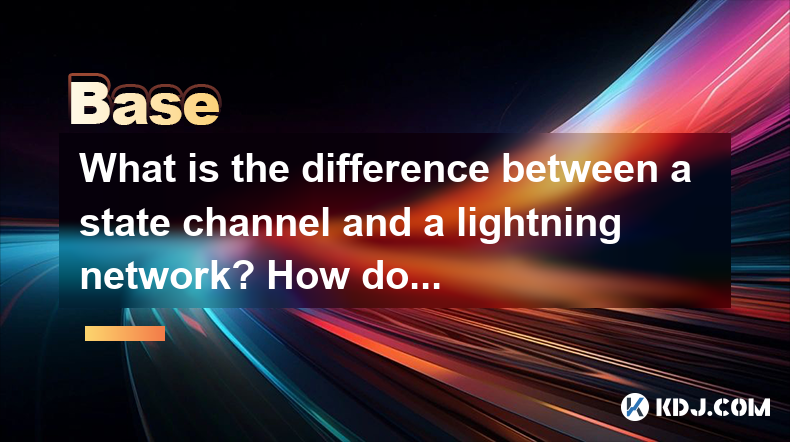
What is the difference between a state channel and a lightning network? How do they improve transaction efficiency?
Apr 05,2025 at 05:21pm
State channels and the Lightning Network are two significant technologies within the cryptocurrency ecosystem aimed at improving transaction efficiency on blockchain networks. Both solutions address the scalability issues of blockchain systems, particularly in handling a high volume of transactions quickly and with low fees. However, they operate differ...
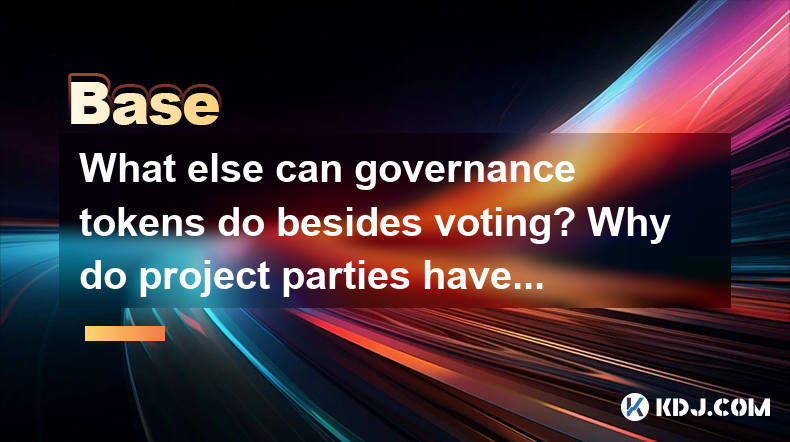
What else can governance tokens do besides voting? Why do project parties have to issue one?
Apr 06,2025 at 06:42pm
Governance tokens have become a pivotal element in the decentralized ecosystem, serving functions that extend far beyond the simple act of voting. While voting is a crucial aspect of these tokens, allowing token holders to influence the direction and decisions of a project, there are numerous other roles that governance tokens play within the cryptocurr...

Why is the oracle called the bridge between blockchain and the real world?
Apr 04,2025 at 04:00am
The concept of an oracle in the cryptocurrency and blockchain world is crucial for understanding how these decentralized systems interact with external data. The oracle is often referred to as the bridge between blockchain and the real world because it serves as a vital intermediary that fetches, verifies, and transmits off-chain data to the on-chain en...
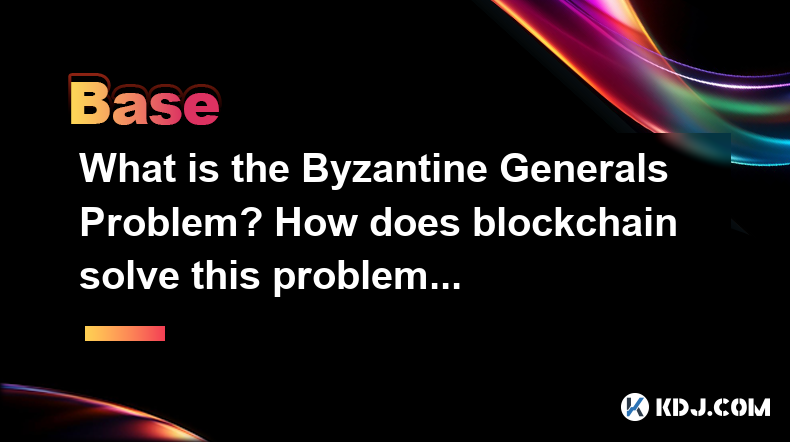
What is the Byzantine Generals Problem? How does blockchain solve this problem?
Apr 05,2025 at 06:29am
The Byzantine Generals Problem is a classic problem in the field of distributed computing and computer science, which has significant implications for the reliability and security of decentralized systems, including blockchain technology. This problem is named after a hypothetical scenario involving several generals of the Byzantine army who must coordi...
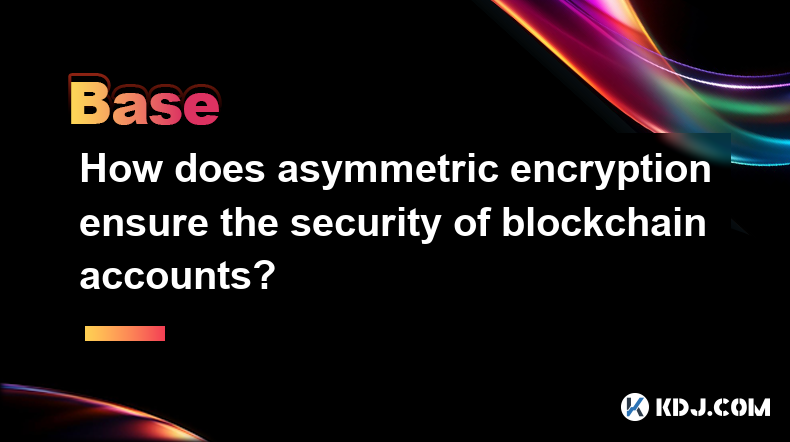
How does asymmetric encryption ensure the security of blockchain accounts?
Apr 06,2025 at 07:50am
Asymmetric encryption plays a critical role in securing blockchain accounts by providing a robust method of safeguarding private keys and ensuring secure transactions. This article delves into how asymmetric encryption works and why it is indispensable for the security of blockchain accounts. What is Asymmetric Encryption?Asymmetric encryption, also kno...

What role does the Merkle tree play in the blockchain? Why can it verify data integrity?
Apr 04,2025 at 01:29pm
The Merkle tree plays a crucial role in the blockchain, primarily due to its ability to efficiently and securely verify data integrity. This article will delve into the structure of a Merkle tree, its implementation in blockchain, and how it ensures the integrity of data. Understanding the Structure of a Merkle TreeA Merkle tree, also known as a hash tr...

What is the difference between a state channel and a lightning network? How do they improve transaction efficiency?
Apr 05,2025 at 05:21pm
State channels and the Lightning Network are two significant technologies within the cryptocurrency ecosystem aimed at improving transaction efficiency on blockchain networks. Both solutions address the scalability issues of blockchain systems, particularly in handling a high volume of transactions quickly and with low fees. However, they operate differ...

What else can governance tokens do besides voting? Why do project parties have to issue one?
Apr 06,2025 at 06:42pm
Governance tokens have become a pivotal element in the decentralized ecosystem, serving functions that extend far beyond the simple act of voting. While voting is a crucial aspect of these tokens, allowing token holders to influence the direction and decisions of a project, there are numerous other roles that governance tokens play within the cryptocurr...

Why is the oracle called the bridge between blockchain and the real world?
Apr 04,2025 at 04:00am
The concept of an oracle in the cryptocurrency and blockchain world is crucial for understanding how these decentralized systems interact with external data. The oracle is often referred to as the bridge between blockchain and the real world because it serves as a vital intermediary that fetches, verifies, and transmits off-chain data to the on-chain en...

What is the Byzantine Generals Problem? How does blockchain solve this problem?
Apr 05,2025 at 06:29am
The Byzantine Generals Problem is a classic problem in the field of distributed computing and computer science, which has significant implications for the reliability and security of decentralized systems, including blockchain technology. This problem is named after a hypothetical scenario involving several generals of the Byzantine army who must coordi...

How does asymmetric encryption ensure the security of blockchain accounts?
Apr 06,2025 at 07:50am
Asymmetric encryption plays a critical role in securing blockchain accounts by providing a robust method of safeguarding private keys and ensuring secure transactions. This article delves into how asymmetric encryption works and why it is indispensable for the security of blockchain accounts. What is Asymmetric Encryption?Asymmetric encryption, also kno...

What role does the Merkle tree play in the blockchain? Why can it verify data integrity?
Apr 04,2025 at 01:29pm
The Merkle tree plays a crucial role in the blockchain, primarily due to its ability to efficiently and securely verify data integrity. This article will delve into the structure of a Merkle tree, its implementation in blockchain, and how it ensures the integrity of data. Understanding the Structure of a Merkle TreeA Merkle tree, also known as a hash tr...
See all articles





















































































